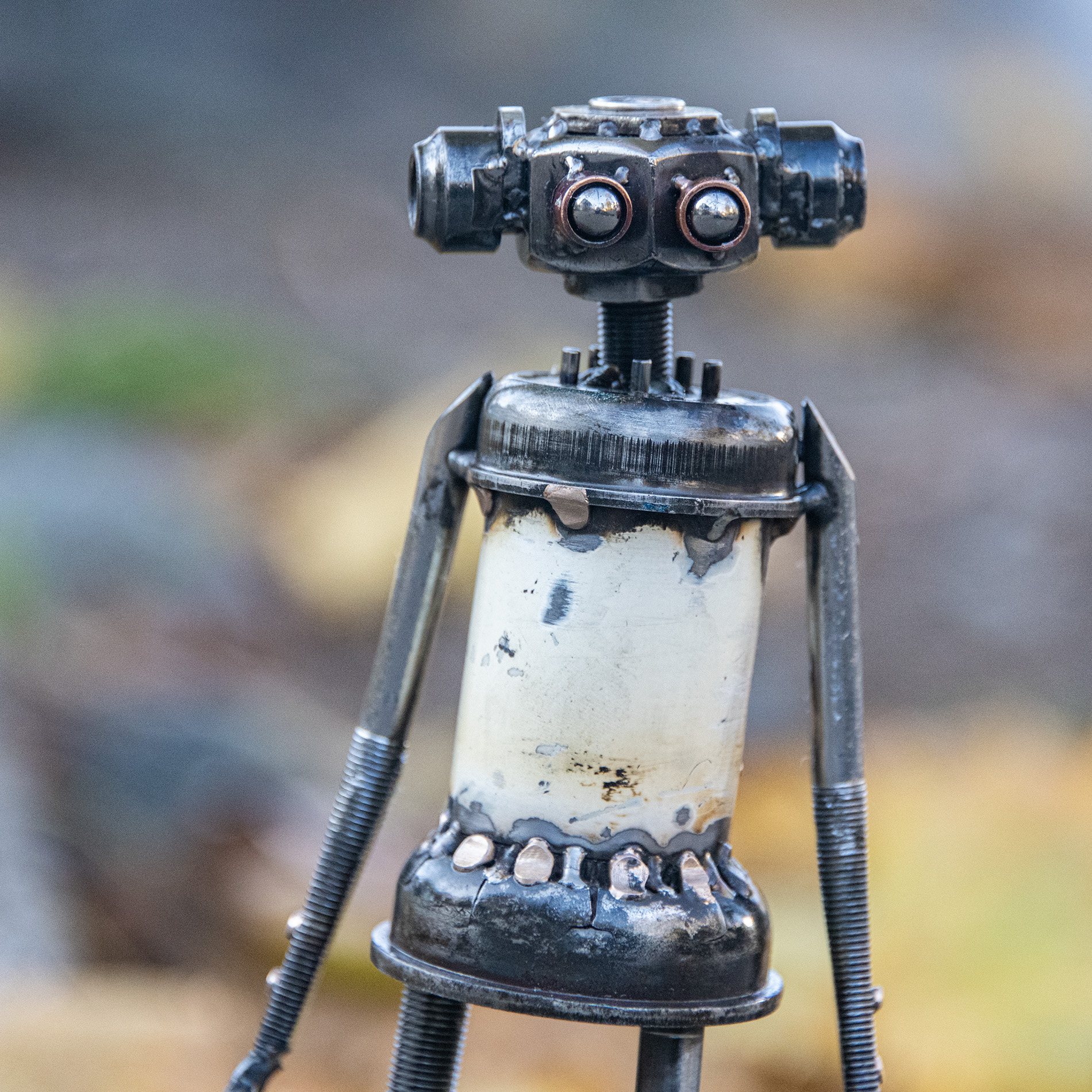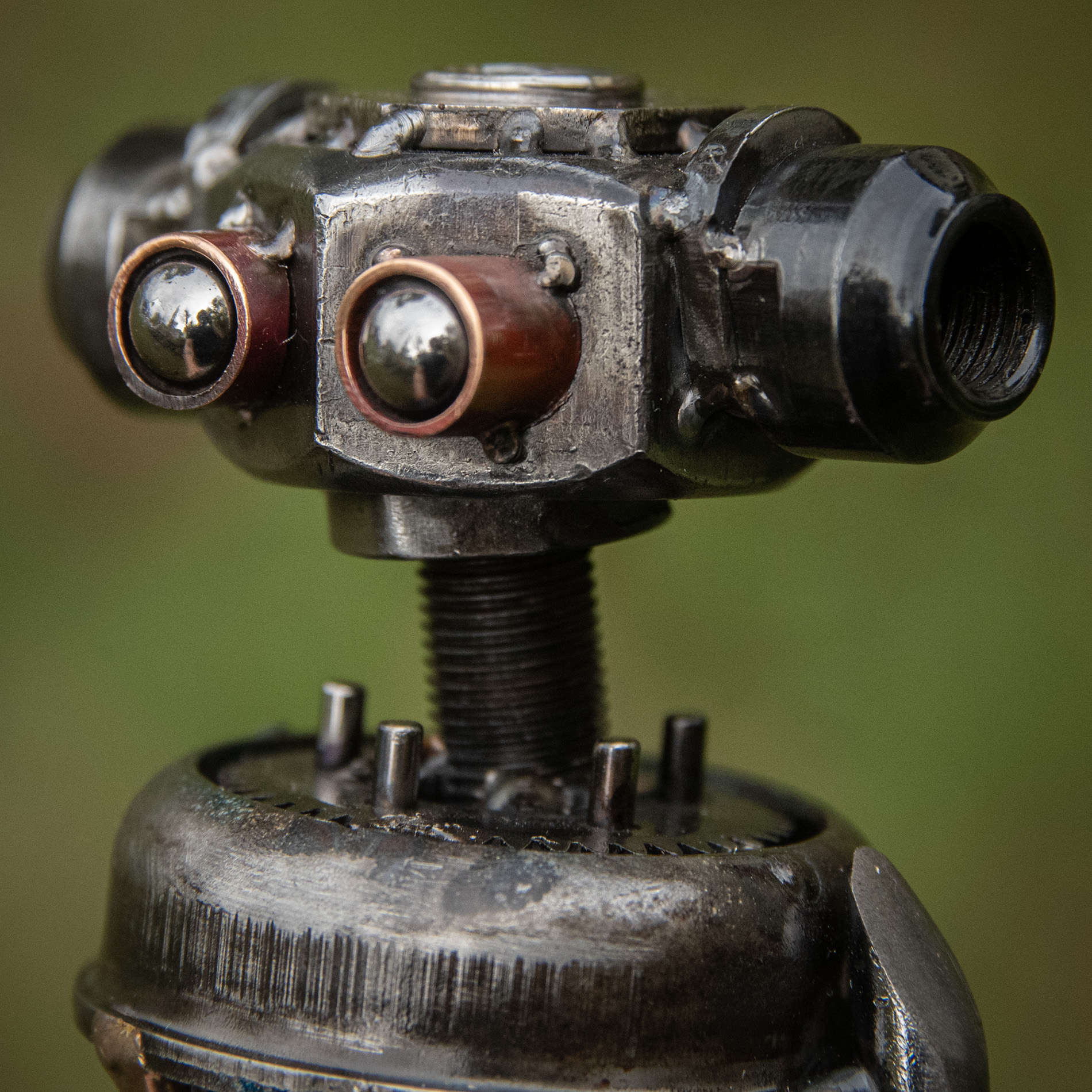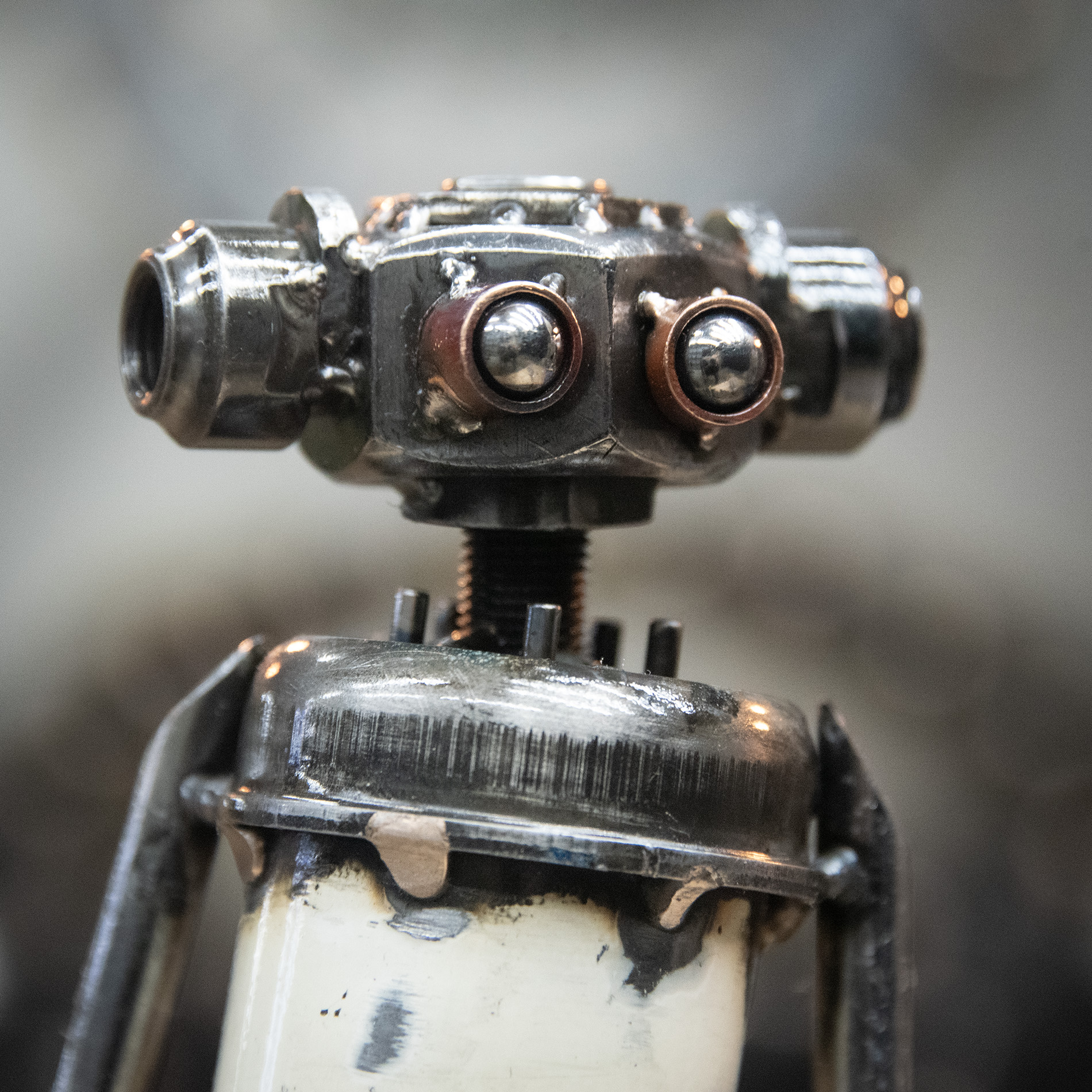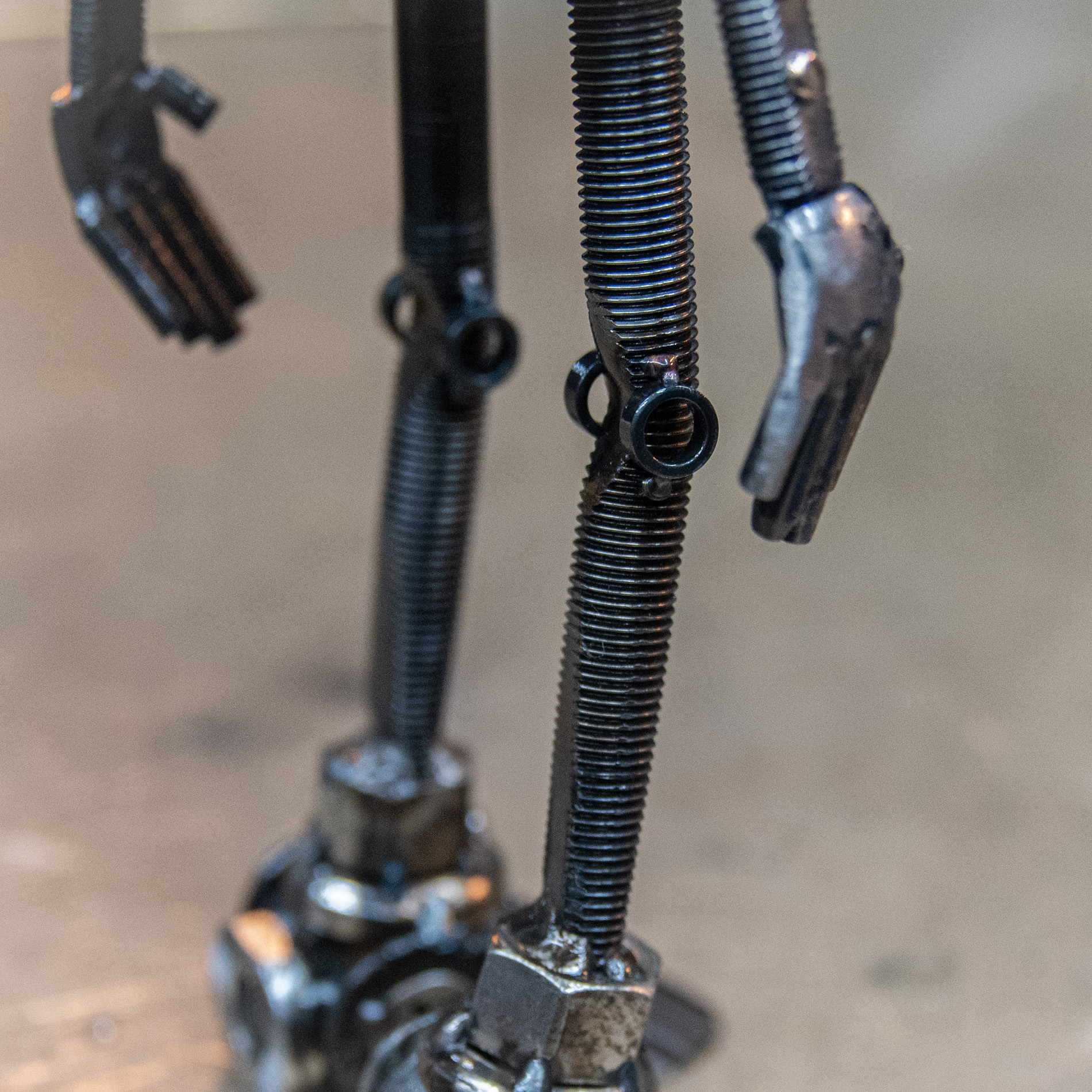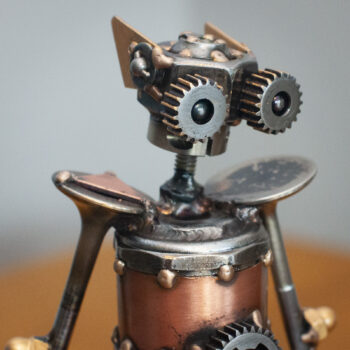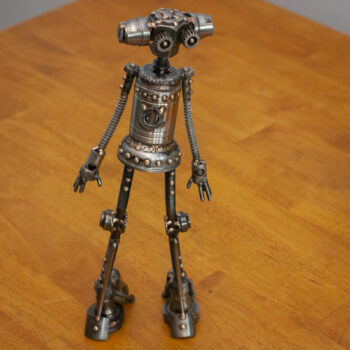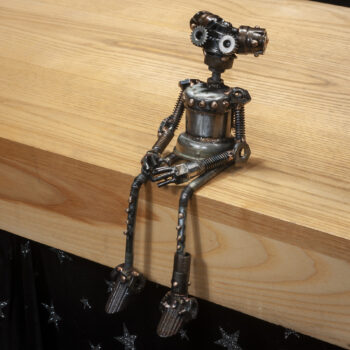Nina I425
Nina is the first non-commissioned piece that I made since my year-long hiatus as a professional artist. In my downtime I had a great deal of reflection as to how I wanted to grow as a sculptor. My time off from making robots helped me realize that I won’t be making art forever, and I won’t always be able to have the strength to hacksaw and file for hours a day. One day my vision and hand-eye coordination won’t be able to live up to my standards for welding. And while these things are inevitable, they haven’t happened yet. It put a fine point on the importance of making the absolute most of my precious and limited art-making time, and that anything short of my best work is a waste of that time!
Making hundreds of robots can get your mindset locked into a rhythm, following well-honed procedures. My old mantra was to pick the parts, lay them out on a table until I felt I had something to work with, then weld all the pieces together, determining the final pose as I proceeded. After that was naming the robot, stamping out and attaching the boilerplate, Then it was cleaning and polishing, then finally applying the clear coat to ‘seal the deal’. While having a routine is great for honing your craft, it wasn’t allowing me to be flexible when trying to create something unique in each piece. For art to succeed it has to break free of the routine – even if that routine has worked effectively in the past.
I approached Nina with an entirely new plan: which was almost no plan at all! I gave this ‘comeback piece’ with new constraints:
Do whatever work you feel like doing on the piece at any given time
For Nina, if I wanted to make a hand, I would make a hand. If I wanted to make a face, I would do that. I’d have arms and a torso cut, filed, and polished without legs even picked out. This allowed for a great deal of flexibility in design choices and I was able to let the piece evolve more slowly. It also allowed me to savor making each part just right. Instead of picking out a couple of arms and sticking them onto the torso, I would think about making the best arm for this piece, and to enjoy making the arm just so – hacksawing facets, filing rounded parts, working the part to get beautiful polished and satin brushed finishes; and not stopping until that arm was the absolute best arm for the piece before moving onto some other part.
Spending an hour on an arm led me to another amazingly large eureka moment: the notion that I could reshape each individual part with hand tools, like a stone sculptor removes stone to reveal the art. I began filing down parts of axles to shape them more like a human’s leg or arm. While this technique seems so obvious in hindsight, I never explored it until Nina, and I haven’t seen it before from other artists who work with re-purposed steel.
This revelation of ‘less-is-more’ led me to filing the brass ‘charm-rivets’ I’ve been using for over a decade, giving them an improved form as wells as a brighter finish.
While all of these innovative techniques lead to some synergistic results, the time it took to make Nina was quadruple that of Ion Class Astrobot construction times of the past. This completely broke my tried-and-true pricing tier – Nina’s a small robot with tons of craft time and innovation. And with no way to classify the robots in any kind of pricing structure, my made-to-order astrobot program was no longer a reliable way to price custom work. Nina broke my website!
Nina is easy to photograph, because she’s got a realism to her pose and her proportions. Through the lens she looks like she’s in a movie, able to express complex emotions through body language. She’s got real weight on her feet as a human would carry their weight – and a spark of life about her.
1 lb, 14.7 oz.
9.5 x 3.75 x 2.5″
this piece is sold
Please visit the available works page or contact the artist.
